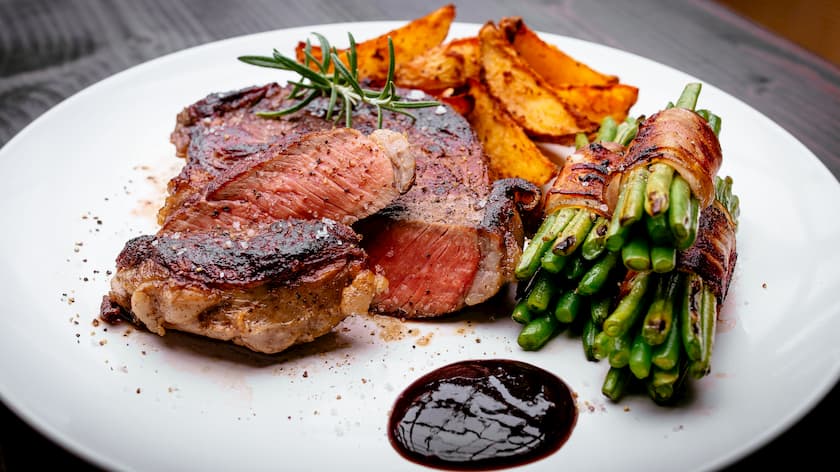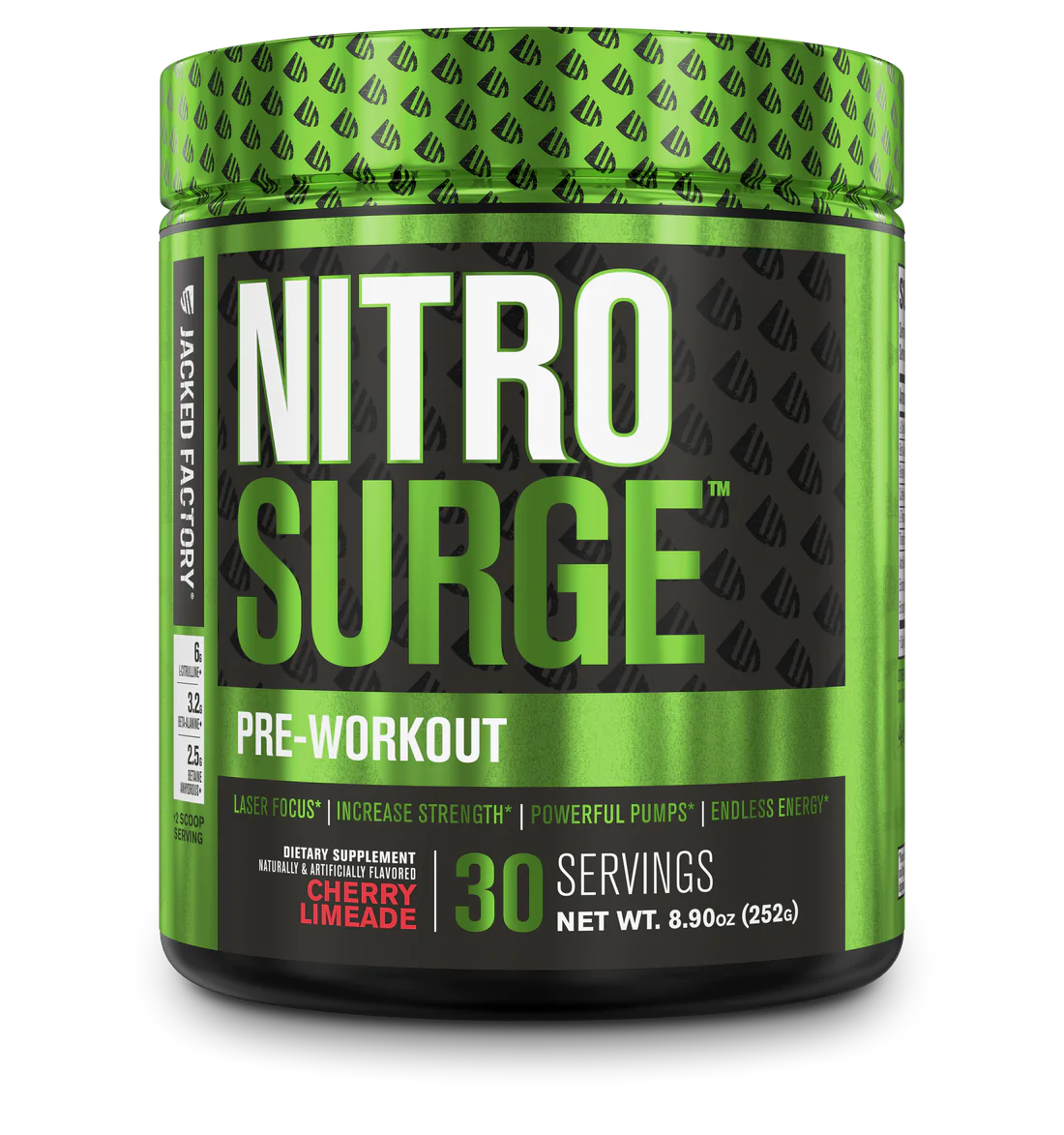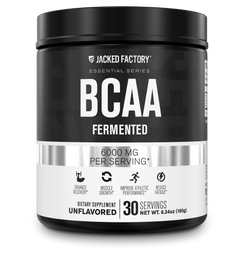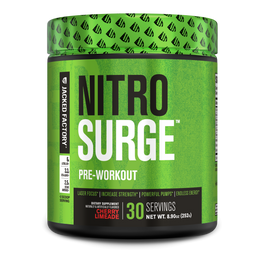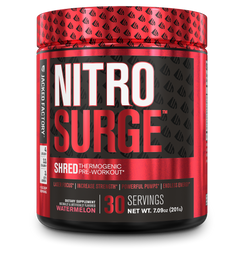Just about every gym-goer has heard someone claim that results are determined 90% by diet and 10% by exercise.
While the exact proportion that diet and training contribute to progress is yet to be clearly shown, it’s safe to say that diet plays a major role in the grand scheme.
More often than not, people seem to carelessly throw the word healthy around when it comes to food and diet, but the reality is that what’s healthy for one individual may not be healthy for another.
In a strictly biological sense, for something to be healthy, it will serve to increase the survivability and fitness of that organism.
Therefore, “healthy” food is simply nourishment that enhances longevity.
Regrettably, bodybuilding has increasingly become a lifestyle that supports the ideology of sacrificing health to look a certain way. Performance enhancing drugs in gross amounts tend to reduce the lifespan of humans and are unhealthy (when abused).
Well, the good news is that everything you’ve ever known about “traditional” bodybuilding diets and “super-clean” eating is pretty much nonsense.
Why “Traditional” Bodybuilding Diets Suck

Statistically speaking, diets that present harsh rules or greatly restrict specific nutrients fail in the long-term due to their unreasonable demands and lack of balance.
On the contrary, “flexible” diets have a much higher adherence rate in the long run. [1]
Bodybuilding is a sport of extremes, so naturally “traditional” bodybuilding diets may seem like the best way to eat. However, this is not the reality of things.
If you’re wondering what exactly “traditional” bodybuilding is, it’s generally something along the lines of this:
- Meal 1: Egg whites, oats
- Meal 2 (Pre-Workout): Grilled chicken breast, brown rice, steamed broccoli
- Meal 3 (Post-Workout): Whey protein mixed with a simple-carb solution
- Meal 4: Same as meal 2
- Meal 5: Same as meal 2
- Meal 6: Casein protein, almonds
While this meal plan may appear to be “super-clean” and healthy, the reality is that it actually lacks in many areas.
The diet has virtually no fat, it’s monotonous, eliminates food groups, contains no fruit and minute amounts of veggies, and is deficient in just about every micronutrient.
It really shouldn’t need to be explained why these shortcomings are not conducive to health, wellbeing, or appearance.
The Dichotomy of “Clean” and “Dirty” Foods Explained
Recall from earlier that “healthy” food is simply nourishment that is conducive to longevity.
Since different humans have many different variables that go into their nutrient requirements, you can see that the relativity of “healthy” foods creates a whole new dynamic behind dieting.
This is to say that very few foods and ingredients are outright unhealthy because they could be beneficial if eaten in a proper quantity.
Ask yourself, “What constitutes a unanimously health-promoting food?”
Most people’s answers are usually littered with terminology like “organic,” “free-range,” “hormone-free,“ “low-fat,” “low-carb,” “low-calorie,” “dairy-free,” “gluten-free,” the list goes on.
Do you see the assumptions being made here? Why is food that’s low-calorie, for example, always a healthy choice? What about “organic” foods?
Just because a food isn’t modified or processed in some capacity doesn’t necessarily mean it’s always a healthy choice?
Sorry to say, but you’ve been brainwashed by marketing, media, and pseudo-nutritionists if you honestly think that way.
Take note that the term “clean food” is pretty much just a way for people to convey the idea that food is healthy. Contrarily, “dirty/junk food” means the food is unhealthy.
Many readers likely think of foods like pizza, burgers, and ice cream as “dirty food.” Why though? Is it because those foods tend to be processed, high in fat and sugar, and low in micronutrient content?
Many questions have been brought up here and answers are on the way!
“If It Fits Your Macros” (IIFYM): A Flexible Approach to Dieting
IIFYM (also referred to as ”flexible” dieting) has made waves in the health and fitness industry over the past decade and has garnered a heap of both lovers and haters.
Oddly though, when you really consider what IIFYM is, it isn’t really anything new or profound.
In fact, IIFYM is the way pretty much everybody who tracks their food intake has always eaten, with one seemingly significant exception: no foods are seen as off limits.
Many readers are probably gawking at that previous line, “What?! You’re telling me I can eat whatever I want and still meet my health and fitness goals?!”
Well, the short answer is “Yes.” In the bodybuilding and fitness realm, the idea of no foods being off limits has led “clean” eaters into a frenzy, berating IIFYM as being a wrong way of dieting (or that science is bogus, which is a pretty pathetic argument).
For readers hearing about IIFYM for the first time, this will likely come as a shock, but the fact of the matter is that very few foods or ingredients are unhealthy; it’s the amount that you eat them in that determines whether or not they are good for you and your goals.
Barring specific food allergies or irrational fear of certain food additives, there are little grounds to classify a certain food as being wholly “dirty” or unhealthy.
Don’t misinterpret this to mean that you should go drown yourself in a bath of FD&C Blue #1 and think that’s going to be healthy because surely that’s not what has been iterated.
There is plenty of research that goes into the potential deleterious effects on of things like artificial ingredients and other food additives, but frankly, if you’re not consuming these things day-in and day-out in large amounts there is little reason to be concerned.
Some good examples of ingredients that mainstream media condemns are partially hydrogenated oils and high-fructose corn syrup; both of which have very unbecoming track records, especially with their increasing use in food supplies and the simultaneous rise in obesity rates.
Many readers are likely familiar with trans fatty acids, which chemically produced from partial hydrogenation of oils and have been shown to promote cardiac complications even in small quantities.
However, even if you’re taking in less than 1g of trans fat per day (which is not that hard to do unless you plan to down a stick of Crisco) the health damage will be nonexistent. [2]
High-fructose corn syrup is no different, if you’re eating an otherwise healthy diet and controlling your total calorie intake, then a modest amount of high-fructose corn syrup won’t make or break your diet. [3]
Again, the dose determines the health benefits and damage, not the actual food or ingredient in question.
Take note that IIFYM is not without a few fundamental flaws, and it is a dieting ideology that preaches moderation. Unfortunately, as alluded to in the introduction, the health and fitness industry is more often than not in favor of extremes.
This is likely why many bodybuilders and fitness figures have objected against what IIFYM and flexible dieting promotes. The following section will go over what some of those fundamental flaws are and how to correct them.
Logical Dieting 101: Eluding Deficiency and Excess
Throughout this article, the idea of what makes something healthy has been discussed in a practical matter. Hopefully, you also recall that there is no one-size-fits-all diet plan out there and everyone’s precise nutritional needs vary.
This means you need to take time to learn your body’s specific metabolic needs, which comes through trial and error.
When you really look at the core principle of IIFYM, it basically shows that the foods you eat are simply a means to an end for attaining your macronutrient and calorie quotas each day. Therefore, if you can eat a few Pop-Tarts and stay within your daily limits, then you’ll be okay.
However, this is where one of the major pitfalls of IIFYM arises, as many people will use IIFYM as an excuse to disregard things like micronutrients, dietary fiber, the quality of protein sources, essential fatty acid intake, and sugar consumption (all of which are certainly vital components for proper health and performance).
For example, a diet that contains a large amount of vegetable protein probably won’t be nearly as effective for muscle building and burning fat as one that contains higher quality, leucine-rich protein sources such as whey and eggs.
By the way, vegan diets can absolutely work for bodybuilders and strength athletes, but the idea that they’re “optimal” is not what research suggests.

More often than not, people assume that IIFYM promotes the idea that cake, Pop-Tarts, and cookies are all you need to eat your dietary needs.
Unless you have the metabolism of a shredded superhero, small amounts of dietary fiber and a bunch of trans fats probably won’t fit your macronutrient needs, especially if you’re trying to compete in a bodybuilding show or athletic event.
Does this mean your diet must include only nutrient-dense foods?
Absolutely not, and this is actually a major benefit of IIFYM in that it promotes flexibility in one’s diet.
If you wish, you can also incorporate a few portions of foods that are more nutrient-devoid or empty in calories. As long as you’re still meeting your calorie and macronutrient needs at the end of the day, and assuming you are balancing their macronutrient proportions at each feeding, you can incorporate most types of food.
Moreover, the acronym IIFYM should be modified to include another “M” for “micronutrients.”
Back to the Pop-Tart example (which seems to be the favorite food of IIFYM followers), it’s going to be next to impossible to fulfill your micronutrient needs eating Pop-Tarts all day with only a few protein shakes for good measure.
When you really breakdown a “healthy” diet, chances are you’re still going to emphasizing nutrient-dense foods such as lean animal and animal-derived proteins, nuts and seeds, whole-grain carbohydrates, vegetables, and fruits.
By this point, you’re hopefully not labeling those foods as “clean” foods because that term is nonsensical. Instead, call these foods “nutrient-dense.”
It may take some time to wrap your head around IIFYM and what it really boils down to, but you’re simply delusional if you think that grabbing a slice of pizza or apple pie with your friend is going to sabotage all your hard work in the gym.
Note the words “a slice,” an example of moderation.
The ironic thing is that many people who are steadfast advocates of traditional “clean” bodybuilding diets will simply run out of willpower after a short period and go on absolute binges of nutrient-devoid foods (known as “cheat” days). Binge eating, in any capacity, can and will wreak havoc on your physique and psychological connection with food.
Balancing Macronutrient Intake Throughout the Day
The last drawback to address about IIFYM is that it doesn’t inherently specify anything with regards to macronutrient balance and the quality of protein source with each meal.
Fortunately, most health and fitness enthusiasts know that protein is necessary to help stimulate muscle growth and repair. Of course, fats and carbohydrates also play a role in helping build muscle.
Ultimately though, calories are what determine whether we gain or lose weight, but there will certainly be different physiological consequences from a diet that doesn’t properly balance out macronutrient intake.
To illustrate this point, here are two diet plans that have identical macronutrient intakes (~2100 calories consisting of 150g protein, 235g carbohydrate, and 65g fat) but have extremely differing macronutrient balance throughout the day:
Diet Layout 1 (imbalanced intake)
- Meal 1: 465 cals/5g pro/100g carb/5g fat
- Meal 2: 465 cals/5g pro/100g carb/5g fat
- Meal 3: 525 cals/5g pro/25g carb/45g fat (Pre-training Meal)
- Meal 4: 165 cals/25g pro/5g carb/5g fat (Post-training Meal)
- Meal 5: 480 cals/110g pro/5g carb/5g fat
Diet Layout 2 (balanced intake with higher carbs pre-workout)
- Meal 1: 450 cals/40g pro/50g carb/10g fat
- Meal 2: 410 cals/30g pro/50g carb/10g fat
- Meal 3: 390 cals/25g pro/50g carb/10g fat (Pre-training Meal)
- Meal 4: 450 cals/30g pro/60g carb/10g fat (Post-training Meal)
- Meal 5: 435 cals/30g pro/25g carb/25g fat
The calorie balances of each meal are relatively close between these two diets, but the macronutrient balance is greatly skewed in Diet Layout 1 and would likely deliver unwanted results.
The first diet neglects protein and fats in the first three meals and overloads carbs early on as well. It wouldn’t be smart to eat all those carbs early on and neglect them around the training time frame in favor of fats. Also, the last meal of the day in Diet Layout 1 has a large amount of protein in it.
Diet Layout 2, on the other hand, does a much better job of balancing the macronutrient intake at each meal and making sure that protein is sufficient as well.
Obviously, Diet Layout 1 is an extreme example of how someone could theoretically go about their eating patterns, but it still serves a purpose as many readers of this article may have this kind of mentality.
This diet comparison is mainly meant to illustrate the point that IIFYM can be misconstrued to mean that macronutrient distribution throughout the day doesn’t matter when trying to improve body composition, which is simply not the case.
Also, note that meal frequency is a topic of hot debate, but there doesn’t appear to much evidence for the idea that eating 6-7 smaller meals is better for building muscle and losing fat than eating 3-4 bigger meals.
At the end of the day, eat as many meals as you like so long as you avoid the extremes of eating say 10 times per day or only once per day.
Psychology of Dieting: What IIFYM Teaches Us
By this point you have hopefully grasped the overarching concept behind IIFYM: that flexibility and elasticity in one’s diet are indeed more favorable for long-term health than traditional bodybuilding “clean” diets.
This is mainly for one reason: the fact that dieting is as much a psychological necessity as it is a physiological one.
Often times you’ll hear some meathead in the gym gloating about how “hardcore” he is because his diet consists of nothing but plain chicken breast, rice, and broccoli.
It’s a shame that people believe that’s a great way to eat when the reality is quite the opposite. Bodybuilders especially seem to just assume that sacrifices must be made and that tasty food is not an option when it comes to diet.
It’s actually quite ironic that many health and fitness enthusiasts spend practically half their day in the kitchen and most of them can’t think of anything more creative or tasty to eat than plain chicken and steamed rice.
Don’t succumb to the idea that eating a healthy diet means sticking to bland and boring foods because that sort of thinking will ultimately make you dread it. One thing newcomers to IIFYM should know is that restriction doesn’t necessarily make something healthy.
There is certainly an emotional and psychological connection with human eating behavior. You should eat foods you genuinely enjoy while making sure to achieve your macronutrient and micronutrient quotas; these two things are most certainly not mutually exclusive.
Do you want to be “hardcore”? Then use your brain and figure out how to implement foods you genuinely want to eat into your diet. That’s the quintessential essence of someone who has control over their life and has found a proper, healthy balance with their food intake.
When you think about the biological basis for eating, it really boils down to being something that sustains and nourishes us, both mentally and physically. Eating is not a chore, nor should it be taken for granted.
If there’s one thing all individuals can learn from IIFYM, it’s that a healthy diet reinforces one’s psychological connection with food while propelling them towards their health, physique, and performance goals.
References:
- Smith, C. F., Williamson, D. A., Bray, G. A., & Ryan, D. H. (1999). Flexible vs. Rigid dieting strategies: relationship with adverse behavioral outcomes.Appetite, 32(3), 295-305.
- Teegala SM, et al. Consumption and health effects of trans fatty acids: A review. Journal of AOAC International. 2009;92:1250.
- Moeller S, et al. The effects of high fructose syrup. Journal of the American College of Nutrition. 2009;28:619.
